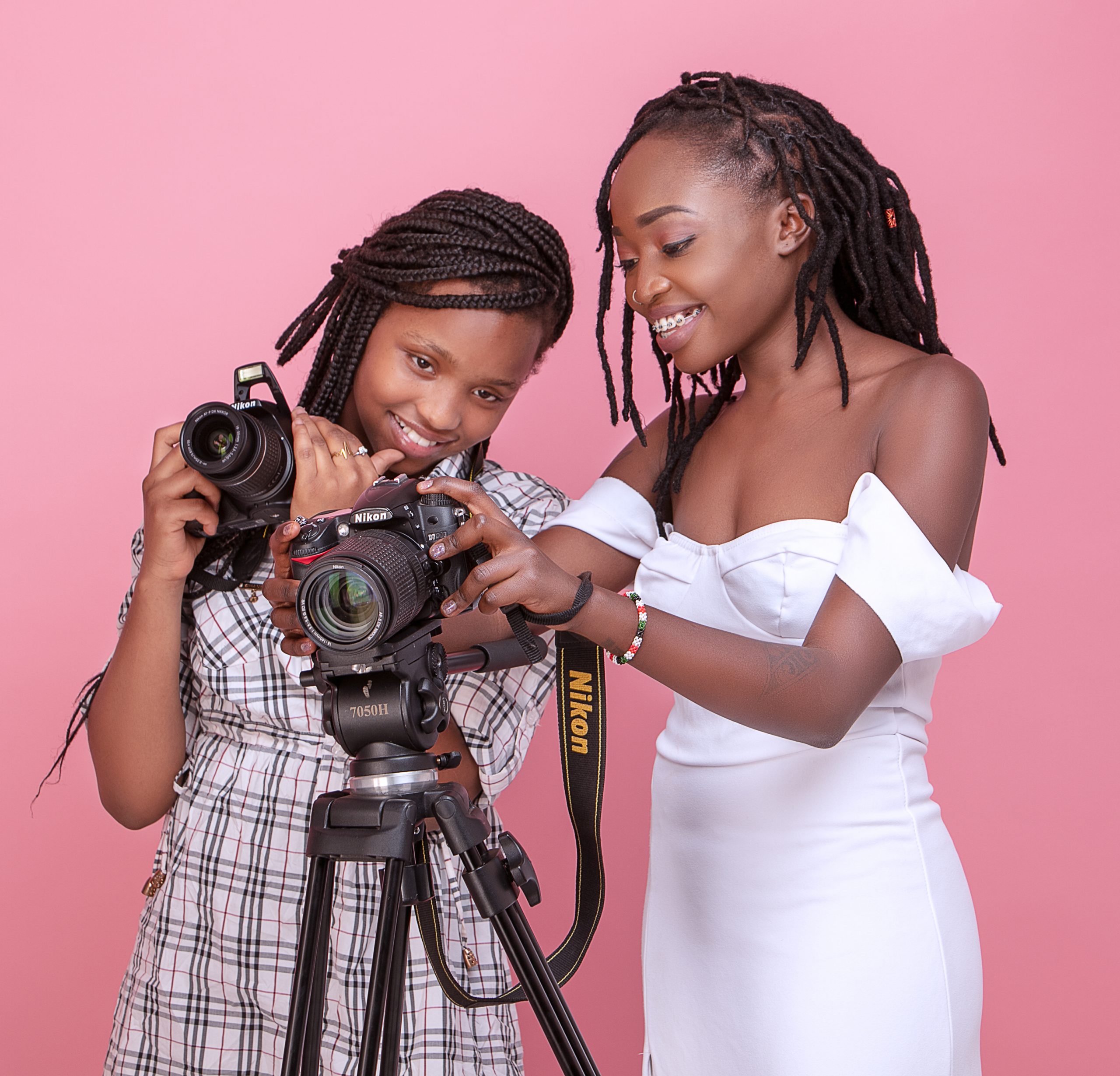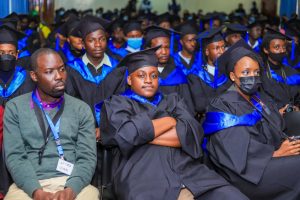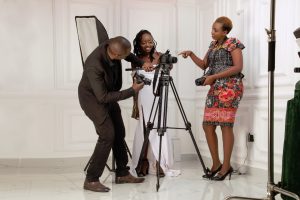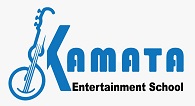PHOTOGRAPHY AND VIDEOGRAPHY LESSONS IN KENYA
Photography and Videography lessons at Kamata School are the BEST-rated in Kenya. We are acclaimed for molding our students to become incredibly well-skilled Photographers and Videographers.
You will find the most valuable resources and techniques to help you grow in videography and photography. To that effect, photographers and video editors from around Africa have chosen Kamata School. We are certainly a school to reckon in Photography and Videography.

The Best School of Video and Photography in Kenya
PHOTOGRAPHY AND VIDEOGRAPHY COURSE STRUCTURE
-
Photography and Videography Lessons Time Period:
Photography and Videography lessons take 3 months to complete a semester.
Technical training that involves camera use, shooting gear such as lenses, reflectors, gimbles and tripods – plus editing – takes 6 months. Therefore, your study takes 2 semesters of 3 months each. Our Photography and Videography lessons are very practical. These are skill-based classes. We aim at helping you become good with the camera and versatile in editing.
2. Photography and Videography Class Frequency:
Classes are held 3 days a week. The selected days are agreeable between the student and the instructor. Your classes could be in the morning, afternoon or evening.
3. Length of each class:
Regular class sessions take 1 hour. More time is allocated for practical work by our students. This entails video coverage and editing. Similarly, taking photos and editing them. Moreover, students also undertake assignments and class projects. To that effect, the teacher may conduct double sessions. We also have outdoor sessions every week, implying some classes would take much longer hours for practical experience.
4. Photography and Videography Evaluation:
The teacher carries out continuous evaluation. Your progress is monitored to ensure that you fully grasp the concepts.
Students shall sit for a CAT and Exam. Practical skills account for 30% of your grading, C.A.T. 30%, and Exam 40%
5. Flexibility:
Your class can be held in the morning, afternoon or evening. To that effect, if you have a busy work schedule, our timings create friendly flexibility.
6. Graduation:
Upon successful completion of the course, our students graduate at the end of the year.

Graduation Day
WHY STUDY PHOTOGRAPHY AND VIDEOGRAPHY AT KAMATA SCHOOL?
1. Friendly Learning Environment. Once you join Kamata School, you will LOVE the people at your service. The mood in our classes, the energy and the groove. Your happiness is important to us. You will enjoy being at Kamata School. Welcome to your Happy Place!
2. Professional Photography and Videography Teachers: We engage highly qualified and well-experienced videography and photography instructors. Our graduate teachers are not only academically qualified but are also experienced professionals. They have established a name for themselves in their respective fields.
3. Class Time Flexibility: Flexible class schedules make it possible for you to study. In this regard, your tight routines at work, school, family or on social duties is well factored.
4. Program Content. We are keen on ensuring that you receive quality training. We shall teach you well researched and tested concepts. Our style of learning shall help you to become outstanding with a camera.
5. Secure and convenient location. We are situated at a secure and central location in Nairobi CBD.
6. Opportunities – We present a world of opportunities to our students. We want to widen your horizons in the creative career. You will meet potential clients, employers, and friends who will be your partners in the journey that you have embarked on.
7. Great Networks. At Kamata School, you will meet people from all career fields. We have doctors, politicians, civil servants, lawyers and business people studying with us. This could be the beginning of friendship, business partnership, or even a relationship. Who knows?
We’ve got Good People. Good People Find Great People at Awesome places like Kamata School.
IMPORTANT TERMS YOU NEED TO KNOW IN VIDEO EDITING
Video Editing is the procedure of manipulating video through rearranging different photographs and scenes so as to create an entirely new output. Kamata Video Coverage and Editing School is the Best learning institution in Kenya that will propel your video editing skills to the next level.
The Most Important Video Editing Terminologies
Here are some of the important videographer phrases you should know. If you don’t know these terms – You are Not Serious! Oh, that’s so Kenyan.

Photography and Videography
1. Aspect Ratio:
It can also be defined as the connection between the width and the peak of any video dimensions which is conveyed in ratio. The most common aspect ratios which are used for the video are 4:3, 16:9, and 1.85:1.
2. B-roll:
It is that process of video editing the place rules are flexible on the time of editing as a result of the fact that supplementary pictures can make a previously unequal scene smooth. They also lend a hand in providing additional details to back various scenes that can be used in the news, marriage ceremony motion pictures, or interviews. For example, in an interview or news report, it can be footage that has been cut to help tell the story.
3. Close Up:
Those pictures which body any topic firmly are referred to as close up shots. For instance, if in a scene a person is the subject, then close up will be a particular person’s face.
4. Color Temperature:
It computes and gives the output Kelvin unit and the scale can vary between cool to warm. It is also known as the visible light in a shot. Let’s take an example: hotter color temperatures tend to appear red or orange, whereas cooler color temperatures often have a bluish tint.
5. Color Correction:
When a professional editor manipulates colors digitally in post-production, then that procedure may also be termed as color correction.
6. Compositing:
At the time of editing pictures, compositing is frequently used. It can be described as the process of merging a large number of photographs with the help of the best possible video modifying tool.
7. Compression:
It will also be known as the process of reducing the quantity of knowledge in a video document. This procedure makes the importing of the downloading process for the video actually rapid. No doubt it takes time to compress any video, nonetheless, the usage of it is going to no longer simplest saves time however provide the approach to retailer extra videos!
8. Crop Factor:
It is a number, generally in the range of 1.3 to 2.0 that indicates the ratio of a sensor’s imaging area to that of a full-frame sensor. Multiplying a lens’ focal length by a sensor’s crop factor gives the actual focal length for that sensor/lens combination.
9. Cut-in (Insert Shot):
It is one of those shots that the majority often displays the objects the subject is in touch with or manipulating. Cut-in photographs are correspondingly useful to b-roll as a result of the stray from the topic for a brief period of time.
10. Depth of Field (DOF):
It refers to the part of your image that is in the center of attention. A deep DOF will display just about the whole thing in the body sharply in the center of attention. In the case of shallow DOF, a slender range within your video image shall be in focus. A shallow depth of field lets in for better emphasis to be placed in your major subject.
11. Frame Rate:
It is the rate that your shutter cycles through opening and closing or when the sensor captures video in a 1 2d length.
12. F-stop:
It is a term used to describe the size of the aperture opening. The lower the F-stop number, the bigger the aperture. If the aperture is low, more light is able to reach the image sensor. F-stop settings are normally displayed with a forward slash.
13. Jump Cut:
This is a cut that pushes forward in time. It’s usually done inside a similar frame or composition, and on lots of occasions it’s used within montages.
14. J-Cut:
They are used when editing pictures to have the audio from the following shot precede the video. J-cut isn’t brief for leap lower. The title has been derived from the form a j-cut makes to your modifying program’s timeline.
15. L-Cut:
They are the complete opposite of j-cuts because the video is edited in order that the video’s image changes from one shot to some other however the initial shot’s audio continues into the next clip. Similarly, like a j-cut, an l-cut has its identity on account of its appearance within the timeline of your editing device.
16. Memory Bank:
It is a video that paperwork certain time sessions or occasions in somebody’s existence. It can be used to record songs, employ natural sound, report holidays, or just seize moments in on a regular basis lifestyle.
17. Pixel Aspect Ratio:
Pixels are the thousands of tiny squares (normally squares) that make up every symbol to your video. The width of every pixel relative to its peak is known as the pixel facet ratio. For uploading to Video set your pixel aspect ratio (PAR) to 1:1 or 1.00.
18. Shortlist:
It is a complete log of all the shots you want to include for your movie; necessarily this is a checklist full of minute main points that will give your film a way of course and efficiency.
19. Storyboard:
A Storyboard is composed of drawings that illustrate the entire scenes for your manufacturing. They are an organized and direct technique to visualize what must be shot or animated.
20. The Rule of Thirds:
It is a technique of composing photographs which makes your production aesthetically enjoyable. Imagine a tic-tac-toe board aligned at once over your symbol. The grid for the Rule of Thirds looks as if a tic-tac-toe board as it separates the image into nine separate sections.
21. Three-point Lighting:
It turns out to be useful as a result of 3 lighting fixtures that are set up in some way that removes the majority of shadows to stability the picture and features appealing contrast. The 3 lights are recurrently called fill, key, and backlights.
22. Tilts:
They are mounted up and down, or vertical, actions made with the digital camera.
23. Time-lapse:
It is a method the place each body in a video is captured at a miles slower price than customary. When played again at normal speed, time appears to head via quicker. This may also be completed by means of rapid forwarding or expanding the rate of your video in an enhancing program.
24. White Balance:
It is the method of capturing the right kind colors for the kind of available mild. For example, in incorrect white stability, the whites can have tints of yellow, inexperienced, pink, or any other color. Many cameras come with a white balance menu, in addition to an auto white steadiness function
25. Wide Angle:
It is a lens that uses a grouping of glass to allow a shorter focal period than the physical body of the lens would generally permit. In doing so, the wide-angle lens can seize extra of a subject matter from an equal distance when in comparison to an ordinary lens of the same dimension.
Video coverage and editing are related to photography; both disciplines requiring camera usage. However, there is a clear distinction in the skills required to do professional video coverage and editing – and professional photography. In Kenya and indeed Nairobi where photography and video editing are vibrant sections of the media industry, you will notice that Photographers aren’t necessarily video editors.
Welcome to KAMATA Video and Photography School

Facebook Comments